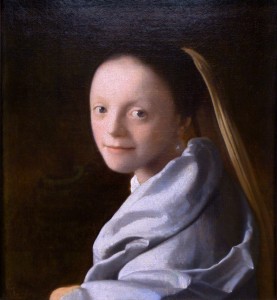
From the time it was called New Amsterdam and controlled by the Dutch, New York has always been about money. But there was a sea change during the 1980s when speculation came to be treated like a sure thing, junk bonds like treasure and art frauds like the real deal. It was only the beginning of Manhattan transforming into a playground for tourists and the wealthy, but what a bracing start it was. Jan Jost’s discomfiting 1989 indie, All the Vermeers in New York, is a bitter, withering takedown of such vapid plastic-and-cash culture.
Mark (played by artist Stephen Lack) can only vaguely describe his Wall Street job as “money mover” and he’s even more at a loss for words when he spies aspiring French actress Anna (Emmanuelle Chaulet) in the Vermeer room at the Metropolitan Museum of Art. From the start, their courtship feels like a negotiation. Mark is looking to acquire some kind of beauty to gird him from the terror of faltering stock markets and Anna is looking for…well, it’s not really clear, but it probably has something to do with cold, hard cash.
Jost had said at the time of the film’s release that he chose Vermeer’s work because during the artist’s life a Dutch speculative market for tulip bulbs crashed and the filmmaker recognized similarities between the absurdity of old-time bulb traders and modern junk bond kings and art-world hustlers. Jost was spot-on about these parallels, but he was wrong about one vital aspect: The director thought he was making a dirge for a decade of greed, but sadly it was less elegy than prelude.•
· · · · ·
An interview with Jost at the time of Vermeers:
